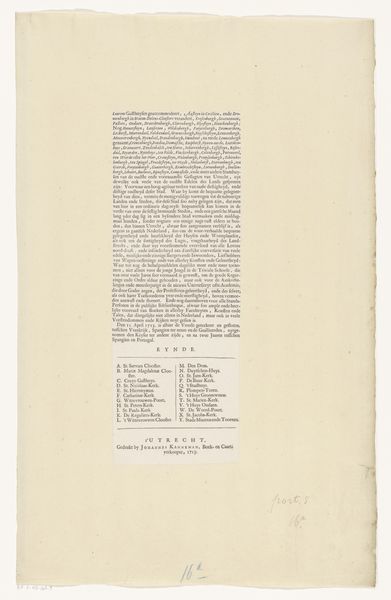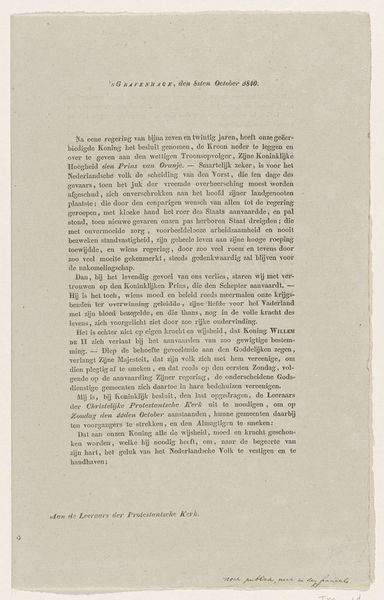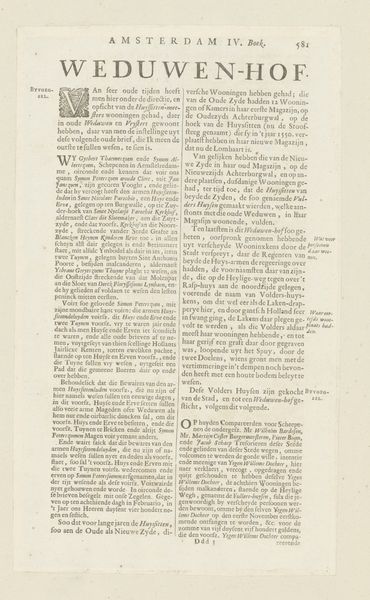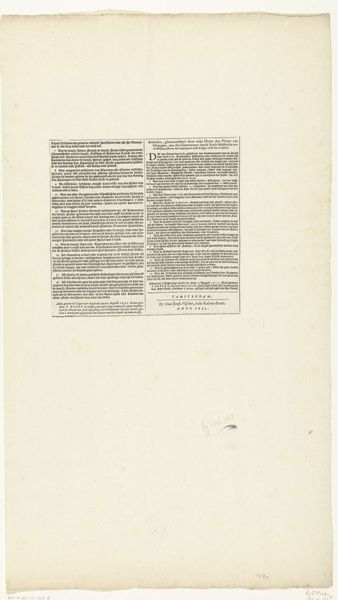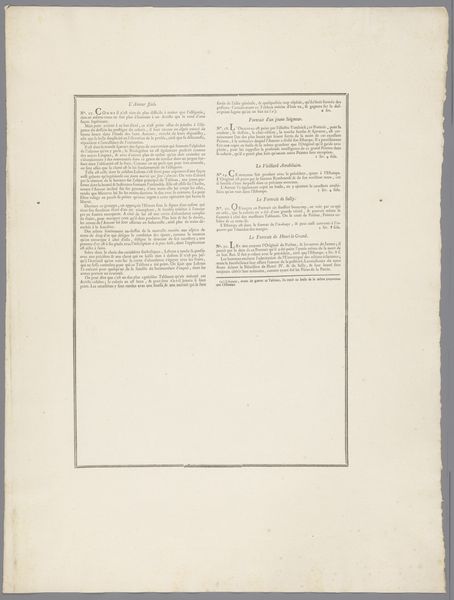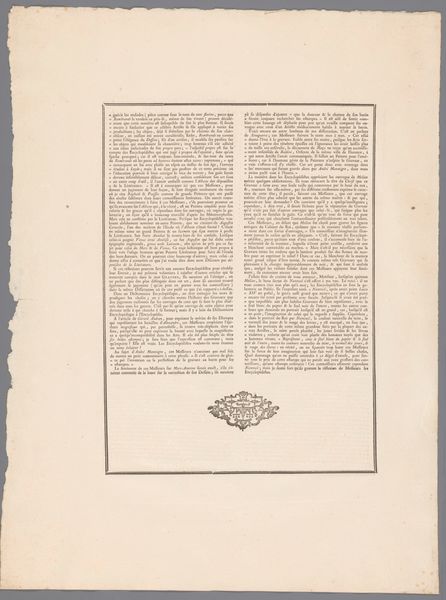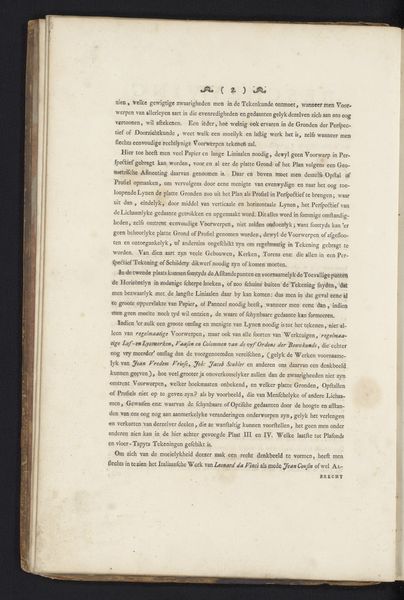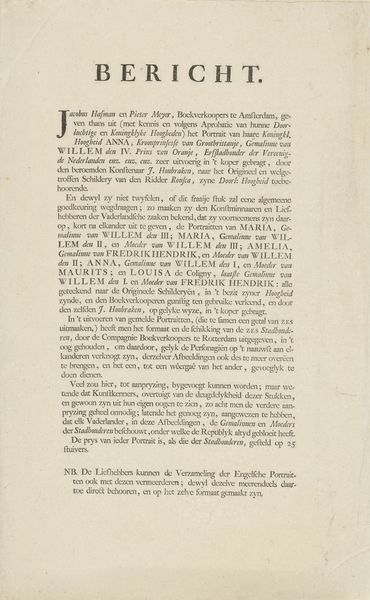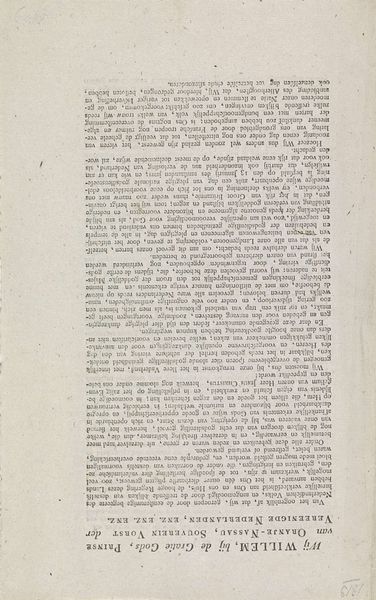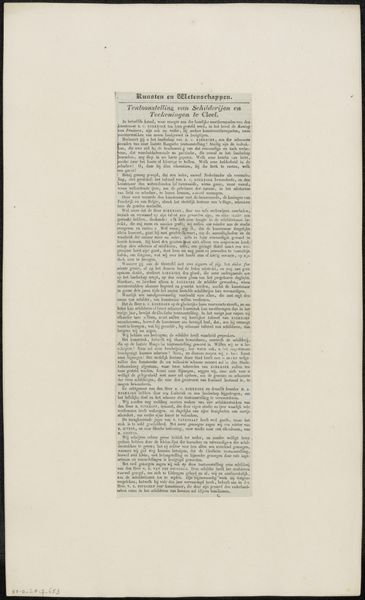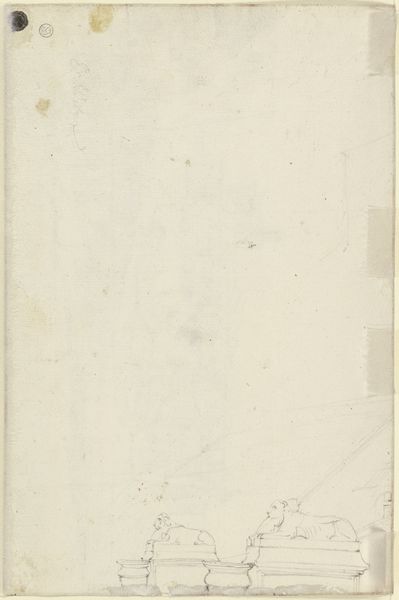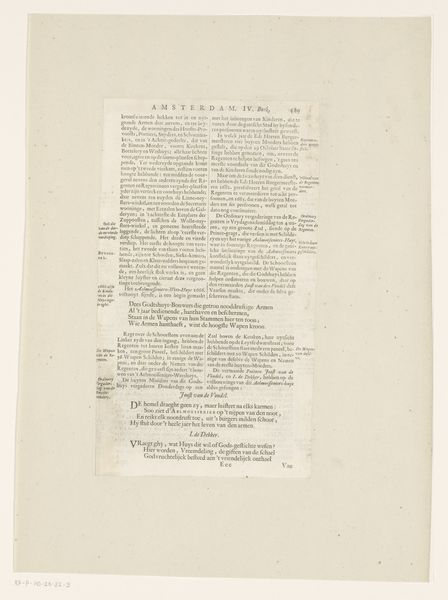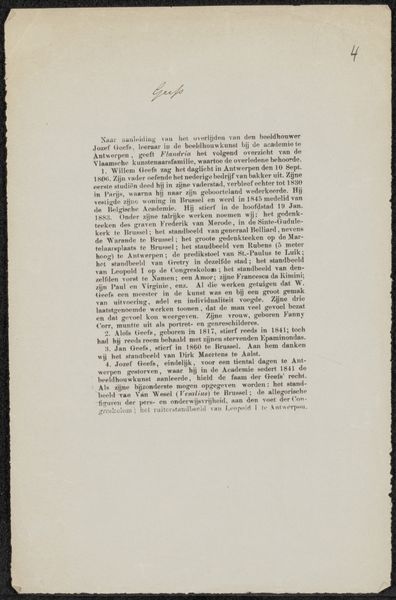
Verklarende tekst bij de prent naar Lairesse's schilderij Lucius Papirius vergeeft Fabius Maximus 1737
0:00
0:00
nicolaasverkolje
Rijksmuseum
print, engraving
#
baroque
# print
#
text
#
history-painting
#
engraving
Dimensions: height 364 mm, width 531 mm
Copyright: Rijks Museum: Open Domain
Editor: We're looking at an engraving from 1737 by Nicolaas Verkolje titled "Verklarende tekst bij de prent naar Lairesse's schilderij Lucius Papirius vergeeft Fabius Maximus," currently housed at the Rijksmuseum. It’s a print mainly consisting of text... somewhat dense and in Dutch, no less! What should we make of such an interesting choice of medium? What’s your take on this piece? Curator: Well, prints like these served a vital public function in the 18th century. Consider it less as an isolated art object, and more as a tool for disseminating information and constructing collective memory. Reproductions, like this one after a painting by Lairesse, made history paintings accessible to a wider audience. But, in particular, the presence of text suggests an overt attempt at controlling how viewers interpreted the source painting and its historical subject, Lucius Papirius's forgiveness of Fabius Maximus. Editor: So, it’s about shaping public perception of this historical event? I see it almost like political propaganda! Curator: Exactly. How do you think that’s achieved through the addition of the text? Consider the power dynamics at play: who is interpreting history for whom? Whose agenda might be served? Editor: I suppose the text adds an official-seeming layer, almost legitimizing a certain interpretation of forgiveness, power, and civic duty. It’s less about artistic expression, and more about political messaging using imagery! Curator: Precisely! The print isn't just decorative; it’s a calculated intervention into the public understanding of history and leadership, intended for discussion and perhaps debate in its time. A very conscious way to direct the viewer's opinion. Editor: I had never thought about a work like this in terms of controlling its public image; really interesting to consider that. Curator: Understanding art’s public role – whether it be instructive or propagandistic – certainly opens new doors of inquiry.
Comments
No comments
Be the first to comment and join the conversation on the ultimate creative platform.

